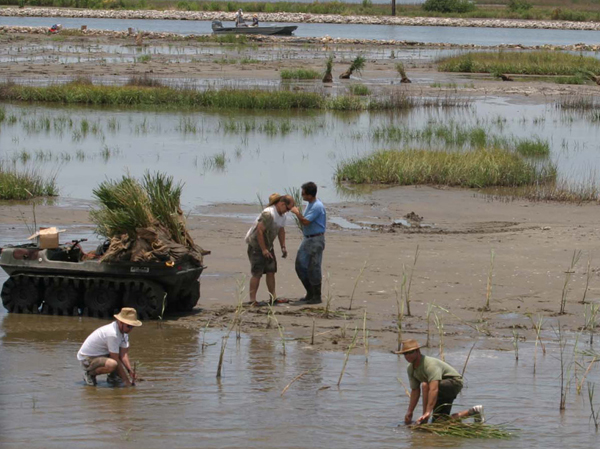
Final Phase: Restoring Resources
The final step of a NRDA is the restoration phase: implementing restoration and monitoring its effectiveness. NOAA and co-trustees first identify the full range of injuries to coastal and marine resources and then determine the best restoration methods. Trustees then work with the public to select and implement restoration projects.
The responsible party, working cooperatively with the trustees, pays the costs of assessment and restoration and is often a key participant in implementing the restoration. If the responsible party does not agree to damages, the trustees may file a lawsuit or submit a claim for damages to the Oil Spill Liability Trust Fund. The United States may seek to recover from the responsible party any compensation paid by the Fund.
The restoration that NOAA and co-trustees implement may fall into one or more categories, including:
Emergency restoration includes actions that are taken by the trustees prior to the completion of the damage assessment and restoration planning process to prevent or reduce continuing natural resource impacts and prevent potential irreversible loss of natural resources.
Primary restoration returns the impacted resources to the condition that would have existed if the incident had not occurred. Trustees often take actions that speed recovery of the injured resources, such as reconstructing physical habitat that was destroyed. Sometimes, however, no action or natural recovery is the best approach.
Compensatory restoration addresses losses from the date of injury until recovery is completed. While the resource is impaired, it is unable to provide services on which other parts of the ecosystem and the public rely (such as fish nursery habitat or recreational use). Trustees ensure that restoration projects address the period from injury until recovery.
Early restoration, a form of compensatory restoration, can be implemented prior to the completion of the NRDA process, when opportunities arise, to achieve restoration faster. If the projects are successful and meet certain criteria, the responsible parties could receive restoration credits for the projects, which would be applied against their total natural resource damage liability.
Examples of restoration include: replanting wetlands, improving fishing access sites, and creating oyster reefs. To address injuries to an oiled wetland, for example, trustees may consider restoration projects that:
- Accelerate the recovery of the marsh to the condition it would have been in had the spill not occurred.
- Compensate for lost recreational use of the marsh, such as hunting and fishing.
- Compensate for the benefits of these natural resources that were lost from the time of the spill until recovery, possibly by acquiring additional marshland.

